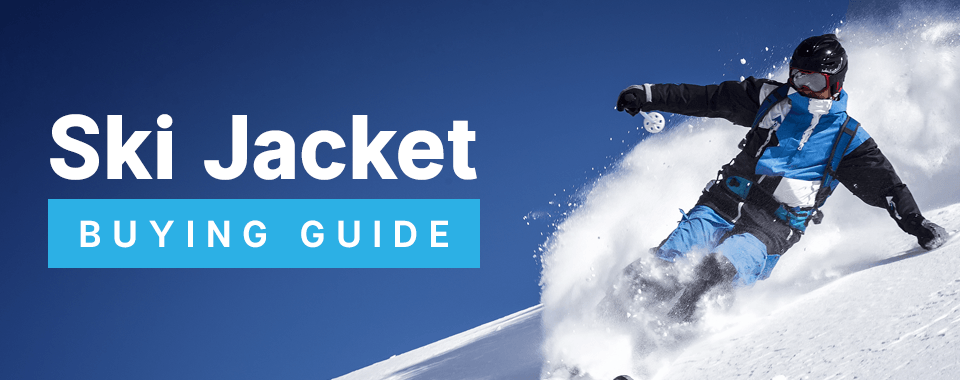 Ski Jacket Buying Guide
Ski Jacket Buying Guide
Ski Jacket Buying Guide
Posted
by
Matt Gahman
on Wednesday, August 8, 2018
Whether you've got a day trip to the slopes planned or intend to spend several days skiing or snowboarding, having the right ski jacket is critical. With the right ski jacket, you'll stay warm, but not too warm. You'll be kept dry and otherwise protected from the elements. The right ski jacket also depends on the type of skiing you do, as some styles are better suited to downhill racing and other are better for cross-country skiing. Before you head to the slopes this winter, make sure you've got the best ski jacket picked out and ready to wear.
Types of Ski Jackets
The conditions you'll likely experience on the slopes or the activities you plan on engaging in during your winter adventure will determine which type of ski jacket is best for you. Generally speaking, there are three types of jacket available, with plenty of variations on each.
1. Shell Jackets
One way to think about a shell jacket is as the outermost layer of your ski outfit. A shell jacket typically has no insulation. Instead, it's meant to be that final layer of protection against cold, wind and wet. Typically when a skier wears a shell jacket, they wear it over several layers of clothing. The multiple layers let you customize your comfort level based on the conditions on the mountain or the type of skiing you're doing. For example, if you start to heat up in the middle of the day, you can remove an internal layer and leave it back at the ski lodge. Alternatively, if you know you'll be out on a particularly cold day, you can wear an extra layer or two beneath the shell for added warmth.
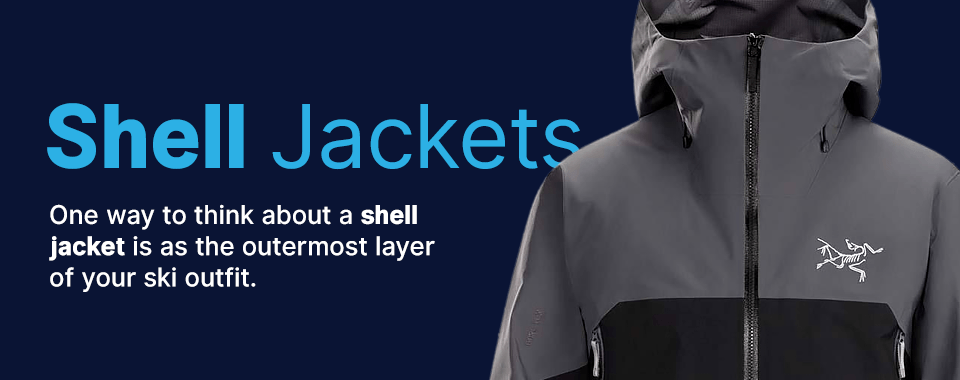
Generally, shell ski jackets are ideal for warmer conditions. When it's freezing out, you might not get the warmth you need from layers and a shell jacket on top. Shell jackets are also best suited for wetter conditions since they tend to be waterproof or water resistant. Two types of shell jacket are typically available:
- A hard shell ski jacket is windproof and waterproof. The goal of the jacket is to keep you comfortable and dry even in very wet conditions. Usually, a hard shell jacket will have a hood.
- A soft shell jacket tends to be made with material that has more give and movement than the fabric used in a hard shell jacket. Usually, the fabric is stretchier and a bit more breathable than what you'd find on a hard shell jacket. Soft shells tend to be water resistant and might be protected with a durable water repellant coating designed to keep water from seeping into and soaking the fabric.
2. Insulated Jackets
A second ski jacket option is an insulated jacket. While a shell ski jacket requires you to layer for warmth, an insulated jacket provides its own warmth, thanks to the down or synthetic filling found in it. Often, the outer part of the jacket is waterproof or water repellant, so that you don't have to wear a second ski jacket on top.
One advantage of an insulated jacket is that it can eliminate the need for layering when you hit the slopes. A disadvantage is that it's possible to get pretty hot in the jacket, especially on warmer days.
Insulated ski jackets can have either a down filling or a synthetic filling, usually made from polyester or nylon batting. Whether one is better than the other has been the subject of much debate. In truth, there are times when down might be more appropriate and times when synthetic is the better bet.
Down comes from geese and ducks and is the undercoating beneath their feathers that helps to keep the birds warm. It traps warmth by trapping air while at the same time being very breathable. Down tends to last much longer than synthetic filling before breaking down, even if you compress it regularly.
If you decide to go with a down insulated ski jacket, one thing you'll want to pay attention to is the fill power, which refers to the filling's ability to keep you warm by trapping in heat. The fill power of down refers to the number of cubic inches one ounce of down takes up. If a jacket has a fill power of 650, then one ounce of down used in that jacket fills up 650 cubic inches. A higher fill power usually means a more insulated, warmer jacket. It can also mean a lighter jacket, as the higher the fill power, the less down you need overall to keep you warm and comfortable out on the slopes.
Down might have its benefits, but it's not a perfect option. One of the most significant drawbacks of a down jacket is that if the down gets wet, the jacket is pretty much worthless until it dries completely. Wet down isn't able to insulate correctly, which can be a problem if it's a wet day or if there's a lot of snow.
While synthetic insulation doesn't have the warmth of down and doesn't compact as well, it does have the ability to keep you warm even when wet. Synthetic fillings also dry a lot more quickly than down, tend to cost less and are often easier to care for — you can wash them at home with little trouble. Synthetic insulation is also ideal for people who are allergic to down or for people who want to avoid wearing products made from animals.
It's also possible to find a ski jacket that has both down and synthetic filling, for a sort of "best of both worlds" situation. A jacket with a mix of down and synthetic fiber insulation will cost less than a down-only jacket, will provide the warmth of down and the water resistance of a synthetic.
3. 3-in-1 Jacket
The third type of ski jacket available is the 3-in-1. When you buy a 3-in-1 ski jacket, you get a shell jacket and an insulated jacket. You can wear either one on their own or wear the two together for the most amount of warmth and water and wind resistance. A 3-in-1 jacket usually has the most versatility of all ski jackets, as you can wear one of the layers on its own on a warmer day, wear the shell as a waterproof outer layer on a day that's somewhat warm but also wet, or combine the two on an unusually cold and wet day. Sometimes, a 3-in-1 jacket is called a tri-climate jacket or a three-season jacket because it works in so many situations and across seasons.
Jacket Fit
You want to buy a ski jacket that fits you, but that means more than verifying that the jacket is the correct size. Usually, jackets come in three different fits — slim, regular and relaxed. You can also find jackets of different lengths, such as cropped, hip length or thigh length.
A slim fit ski jacket is going to sit closest to the body. It can be ideal for particularly active types of skiing, as the close fit means there is little extra fabric to catch the wind. Meanwhile, a relaxed fit jacket is going to have a considerably looser cut. It can be ideal if you plan on layering underneath it.
Features to Look for in a Ski Jacket
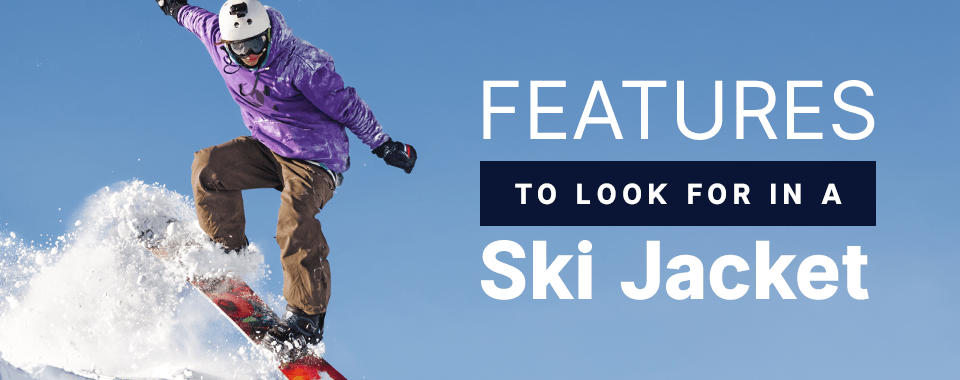
Once you know what type of jacket you want and the type of fit you prefer, you can start looking at the other features a ski jacket has to offer. The features that are best for you depend on where, when and how you ski.
- Waterproof Rating: A jacket's waterproof rating refers to how dry it will keep you under wet conditions. The higher the waterproof rating, the better able the jacket is to stay dry, even when it's snowing or raining. Generally, waterproof ratings range from 5,000 to 20,000, with 20,000 being the most waterproof. Sometimes a ski jacket won't have a waterproof rating, which can mean either that it wasn't tested or isn't water resistant at all.
- Breathability: Just as you want to keep moisture from seeping into the jacket, you also want to give moisture a way to get out of the jacket. A breathable jacket will help to keep you at a comfortable temperature and will prevent you from overheating or becoming very sweaty. As with a waterproof rating, the higher the breathability rating, the better, especially if you're very active. A jacket with a breathability rating of 5,000 is ideal for low activity while a jacket with a rating of 15,000 or higher is best for skiers who are very active throughout the day.
- Seams: How the seams of the ski jacket are constructed can affect how well the jacket can repel or resist water. Fully taped seams feature a waterproof tape over each of the seams on the interior of the jacket. The tape helps to keep water from seeping in. Some jackets have taping at "critical" seams, or in areas where water is more likely to seep in, such as the shoulders. A third option is welded seams, which are fused together to completely keep water out.
- Pockets: Some might argue that the more pockets on a ski jacket, the better. Pockets give you a place to store anything you might need while out and about, such as lip balm, tissues, your phone and sunglasses. Inner pockets are ideal for tucking away items you don't want to lose, while pockets with a zipper closure can help to keep your stuff securely stashed away.
- Zippers: The type, location and quality of the zippers on a jacket can affect its overall performance. For example, some jackets have a storm flap over the zippers to act as an extra layer of protection against moisture. Some jackets have asymmetrical zippers, which keeps the edge of the zipper from scratching your chin. It's also common to find zippered vents under the armpits of some jackets, which can help to air out or cool the interior of the jacket if you start to overheat.
- Hood: The hood of a ski jacket can offer an extra layer of warmth when you're out on the slopes. Many hoods will easily fit over a ski helmet, too. Usually, you have two options when it comes to the hood on a jacket. The hood can be fixed, meaning it's permanently attached to the jacket. Some hoods are removable and often attach to the neck of the jacket with a zipper or a row of snaps. With a detachable hood, you can change up the look of your jacket or adjust the comfort level of it based on how cold or warm it is outdoors.
- Powder Skirt: Getting snow up the back or front of your jacket is a pretty unpleasant experience. A powder skirt, also called a snow skirt, is a wide band of elastic that attaches to the inside of the jacket and forms a protective barrier between your body and the snow. The powder skirt can also help to trap in warmth on especially cold days.
- Snaps: Some ski jackets have a row of snaps or hooks that let you attach the jacket to a pair of ski pants. The attachment turns your jacket and pants combination into a sort of ski jumpsuit and gives you the added benefit of keeping snow and cold away from your body.
- Hem and Wrist Closures: Some jackets have cinch cords or drawstrings around the hem and at the wrists, which you can adjust tightly to keep out cold air and moisture.
- Packability: If you're going to travel with your ski jacket, how well it packs away or how portable it is might be a concern. Down jackets often compress down more than synthetic jackets and regain their shape more readily after unpacking.
The Best Women's Ski Jackets 2018
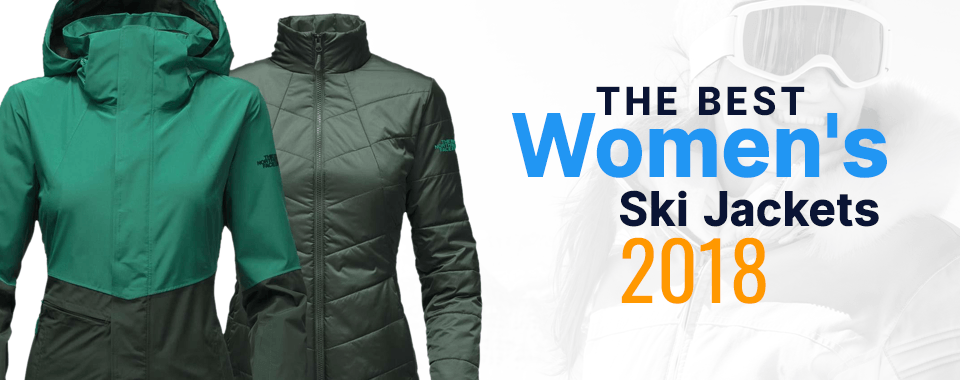
Now that you know some of the features to look for in a ski jacket and the different options available, take a look at some of the best ski jackets for women in 2018.
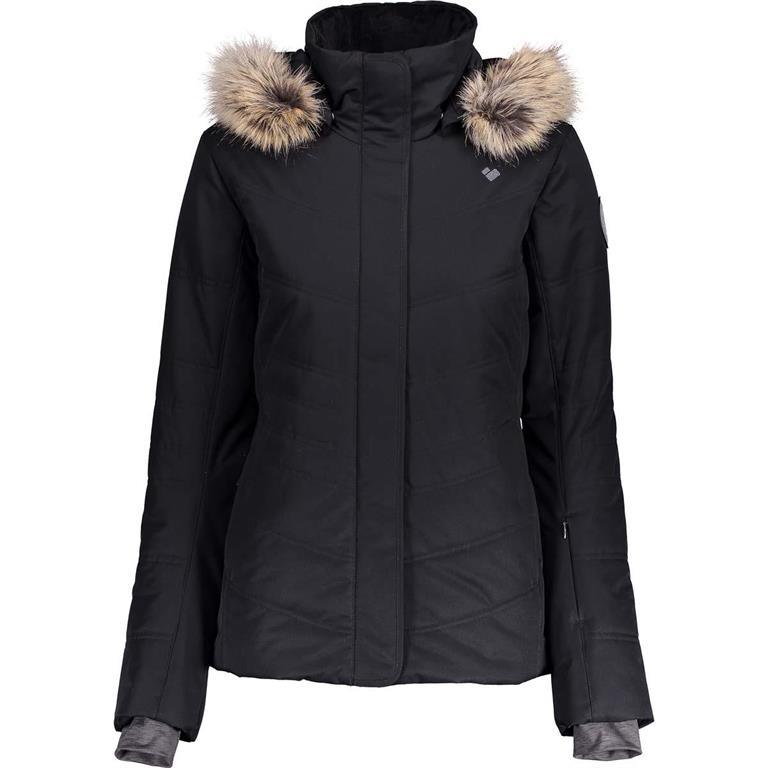
1. Obermeyer Tuscany II Jacket
The relatively affordable price of the Obermeyer Tuscany II jacket makes it a good option for a beginning skier. It has a waterproof and breathability rating of 10,000, a powder skirt, interior pockets, and an interior hem drawcord. The jacket is ideal for on and off the slopes, as it comes in a range of fashion colors and features a removable hood with faux fur trim.
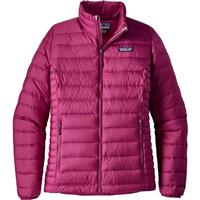 2. Patagonia Down Sweater
2. Patagonia Down Sweater
The Patagonia Down Sweater isn't explicitly a ski jacket, but it is a good option for women seeking a warm insulating layer to wear under a shell. The down sweater packs down super small, making it ideal for travel.
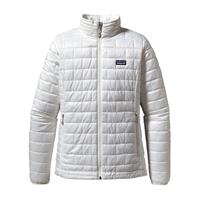 3. Patagonia Nano Puff Jacket
3. Patagonia Nano Puff Jacket
Like the down sweater, the Nano Puff Jacket isn't a ski jacket but is a good option for layering or for wearing on its own during your time off the slopes.
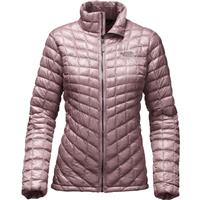 4. The North Face Thermoball Jacket
4. The North Face Thermoball Jacket
The North Face Thermoball Jacket packs down well and is filled with North Face's ultralight "thermoball" insulation. Like the Patagonia jackets, it's not a ski jacket but can serve as an underlayer beneath a shell or as a lifestyle jacket.
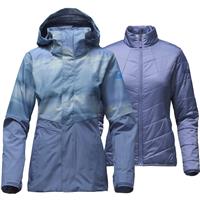 5. The North Face Garner Triclimate Jacket
5. The North Face Garner Triclimate Jacket
The North Face Garner Triclimate Jacket is another 3-in-1 jacket made of a DryVent Shell jacket and a Heatseeker insulated inner jacket, which attaches to the shell with a zipper. It's a great value that's ideal for beginners or people looking for a multi-function ski jacket.
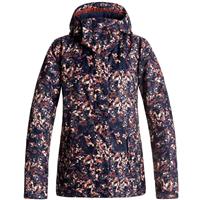 6. Roxy Jetty Jacket
6. Roxy Jetty Jacket
Another ski jacket that's just right for beginners, the Roxy Jetty Jacket has a budget-friendly price tag, a fun printed pattern, and features such as a powder skirt and a removable hood.
The Best Men's Ski Jackets 2018
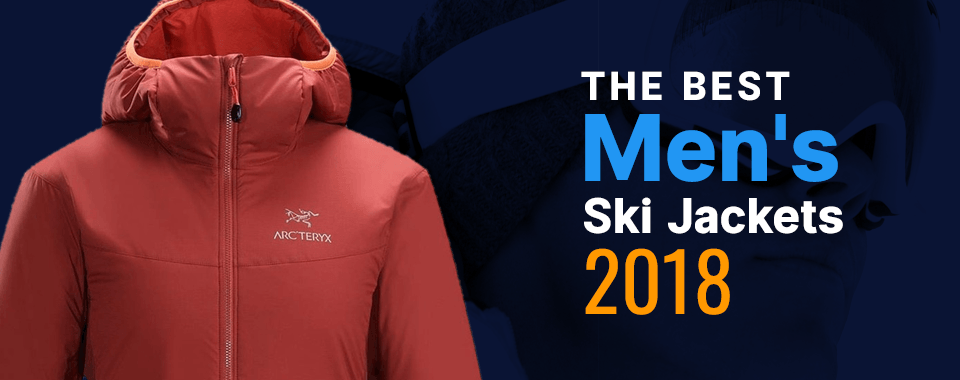
Guys, we didn't forget you. Here's a round-up of some of the best men's ski jackets for 2018.
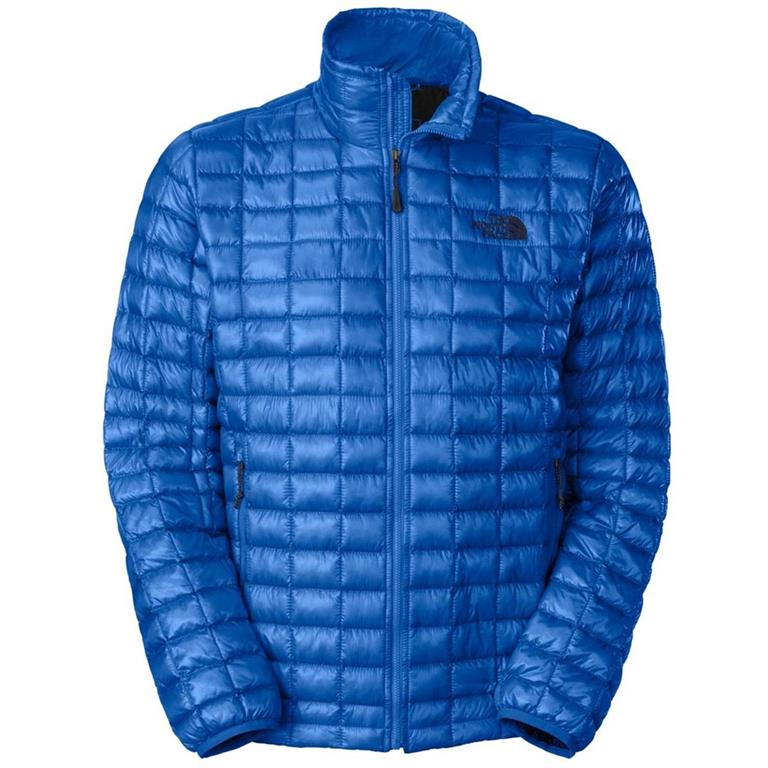 1. The North Face Thermoball Jacket
1. The North Face Thermoball Jacket
Similar to the women's version, The North Face Thermoball Jacket is filled with an ultralight "thermoball" insulation, making it a super packable, warm, lightweight jacket. It's an ideal option for wearing under a shell jacket.
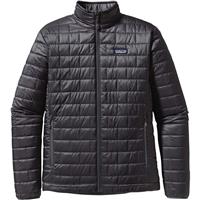 2. Patagonia Nano Puff Jacket
2. Patagonia Nano Puff Jacket
Another good option for an underlayer or a lifestyle jacket on its own, the Patagonia Nano Puff Jacket for men has 60 grams of PrimaLoft Gold insulation and compresses down for the guy on the move.
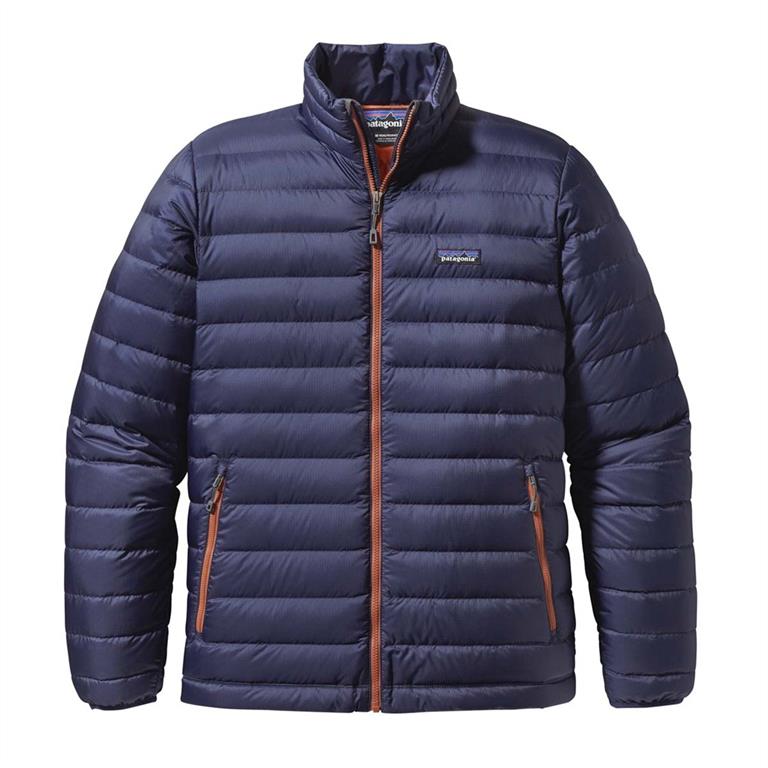 3. Patagonia Down Sweater
3. Patagonia Down Sweater
The Patagonia Down Sweater is another insulated jacket that can serve as an underlayer or stand on its own as a lifestyle jacket. It might not do well on its own on the slopes, but it does make a great travel pillow.
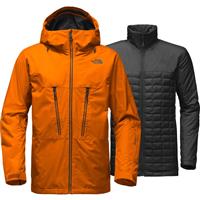 4. The North Face Thermoball Snow Triclimate Jacket
4. The North Face Thermoball Snow Triclimate Jacket
A 3-in-1 ski jacket,The North Face Thermoball Snow Triclimate Jacket has an inner insulated jacket that's filled with "thermoball" insulation and an outer shell made with the North Face's DryVent waterproof and windproof technology.
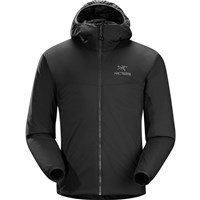
5. Arc’teryx Atom LT Hoody
The Arc’teryx Atom LT Hoody has 60 grams of Coreloft insulation, making it a good pick for an outer layer in warmer conditions or as a mid-layer when its cooler. The outer fabric is breathable and has a DWR finish.
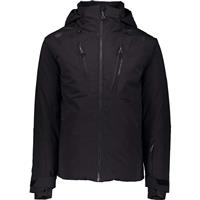 6. Obermeyer Foundation Jacket
6. Obermeyer Foundation Jacket
The Obermeyer Foundation Jacket is a good starter ski jacket for men. It has plenty of features, including a removable powder skirt, removable hood, 100 grams of insulation in the body and 80 grams in the sleeves, which allows for a greater range of motion in the arms while keeping the core warm.
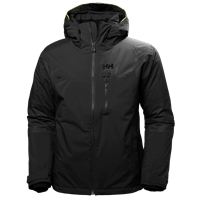 7. Helly Hansen Double Diamond Jacket
7. Helly Hansen Double Diamond Jacket
Another ideal ski jacket for beginners, the Helly Hansen Double Diamond Jacket has 80 grams of Primaloft Black insulation in the body and 60 grams in the sleeves, two-way mechanical stretch fabric for an improved range of motion and a high visibility trim detail on the hood.
Find Your Perfect Ski Jacket at Buckman's Ski and Snowboard Shops
As you gear up for another season on the slopes, having the right ski jacket is critical. Buckman's has plenty of ski jacket options for women and men. Check out our selection and feel free to contact us with any questions you have about fit, warmth or jacket features.

Categories:
Ski & Snowboarding Tips
|
Ski & Snowboard Apparel